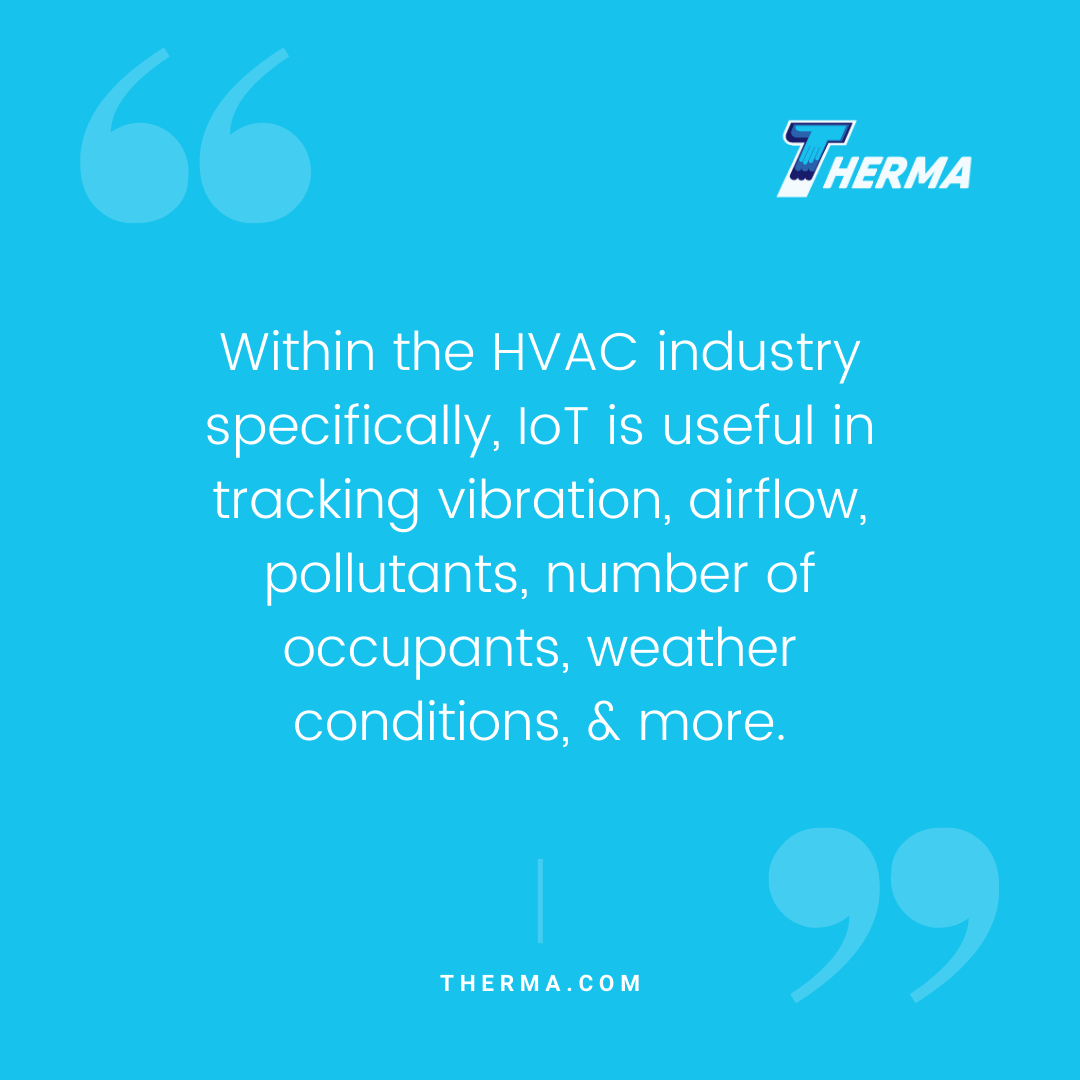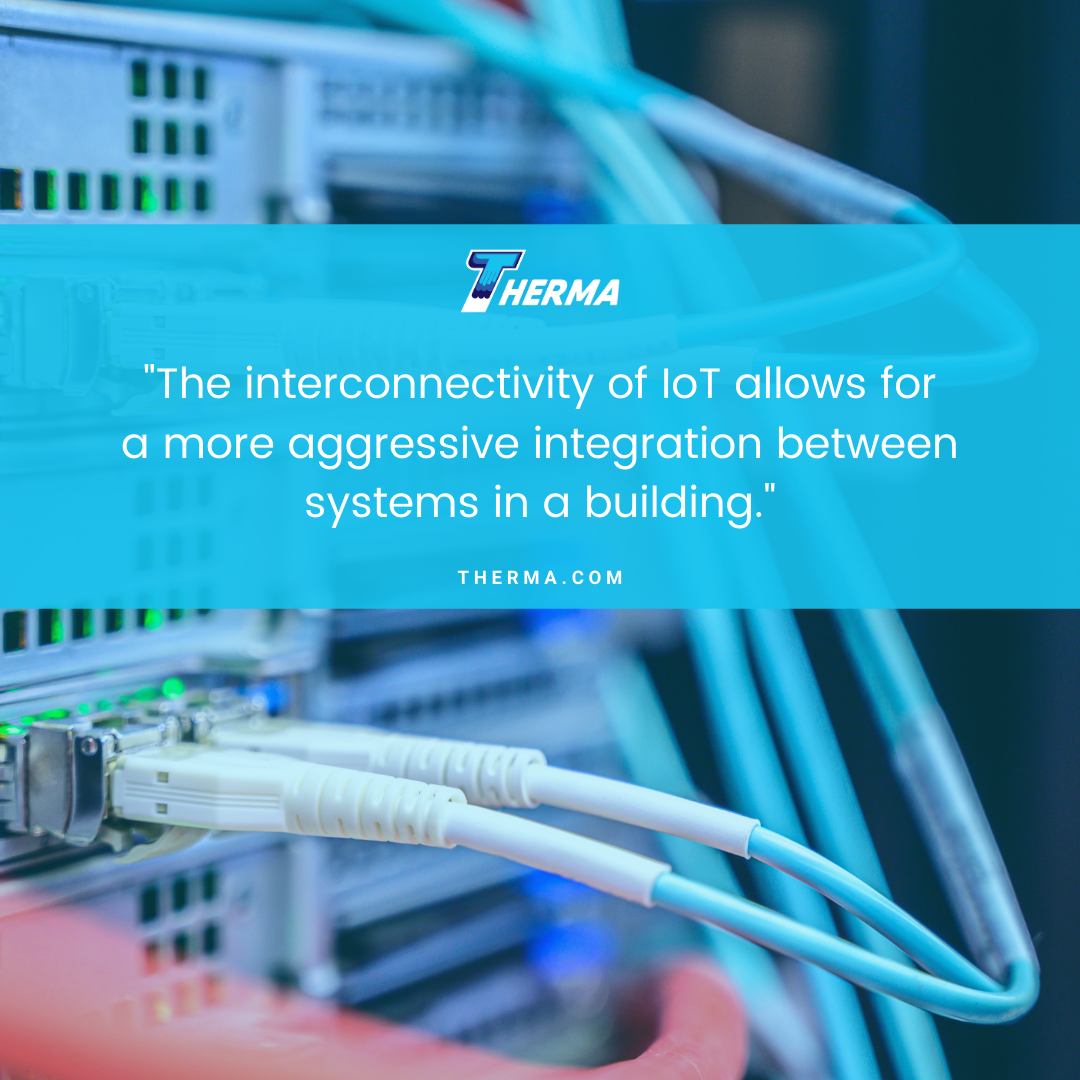The definition of Smart HVAC has changed thanks to the Internet of Things (IoT). The industry has grown from thermostats with simple programming capabilities to include an array of sensor types that provide data to algorithms and apps to make remote adjustments.
IoT devices communicate and analyze data to monitor and improve systems. The information collected is useful for automation, maintenance planning, and optimization of a building’s systems. The growing prevalence of IoT within residential and commercial buildings drives the industry towards more cost-effective and advanced tools for managers and owners to meet energy and efficiency goals.
Within the HVAC industry specifically, IoT is useful in tracking vibration, airflow, pollutants, number of occupants, weather conditions, and more. Monitoring key stress indicators and remote analysis improves troubleshooting and makes preventive maintenance easier to establish. Smart HVAC and IoT together improves metering and optimization feedback. Owners and managers can meet energy consumption and efficiency benchmarks while managing occupant comfort and IAQ.

Redefining and Integrating HVAC Systems
Process controls and automation have used sensors for decades. However, the interconnectivity of IoT allows for a more aggressive integration between systems in a building. Sensors provide data that can be useful for the optimization of multiple energy loops. IoT sensors are a means to see additional savings in operation and maintenance when the data is used across multiple building systems.
Occupancy sensors are an example of how cross-system improvements can benefit HVAC. Keeping lights and equipment off when no one is around to use them serves double duty. Not only does it save power, but it also improves HVAC efficiency by reducing the heat load for an area. The same sensors can also provide a Smart HVAC system with information to adjust airflow for improved IAQ.
Smart HVAC can also expand what equipment managers consider to be part of the system. For instance, the Al Bahar Towers in Abu Dhabi use sensors to adjust external shades based on the outdoor environment. According to a post by IBM, these adjustments reduce solar gain by up to 50%. This translates to a significantly reduced load for cooling the interior. The sensors provide data from equipment that may not be thought of as part of the HVAC system, yet still has a tremendous impact.
More good news is that gutting an established building is not required to implement Smart HVAC solutions. The expansion of IoT technology includes options that work with or in addition to many building management systems. Planned equipment upgrades can consist of IoT devices and sensors so that managers can take advantage of the technology as their budgets allow.
Managers and owners will also need to consider security when introducing IoT and Smart devices to a building. Data security is as essential for Smart HVAC as it is for any other system. Cybersecurity measures such as encryption, physical and network security should be applied to a building’s IoT data streams.
Growing the Smart HVAC Industry
The industry currently meets primary facility and maintenance needs by relying on algorithms and machine learning to analyze data from IoT sensors. However, more complex algorithms and AIs are critical to how Smart devices, and specifically Smart HVAC, can handle future challenges.
Similar to the improvements seen in process controls and industrial automation, data quality and quantity are important. Some ways Smart HVAC may grow for future use are:
- Expanding the types of data collected by including additional sensors for HVAC equipment or specific components.
- Better sensors with improved processing power.
- Advances in AI for predictive analysis and automatic optimization.
Smart HVAC coupled with IoT can improve a building’s profitability. New and innovative methods of collecting and analyzing data improve Smart HVAC systems to meet comfort, IAQ, and maintenance benchmarks. Together, IoT and Smart HVAC have a bright and efficient future.








